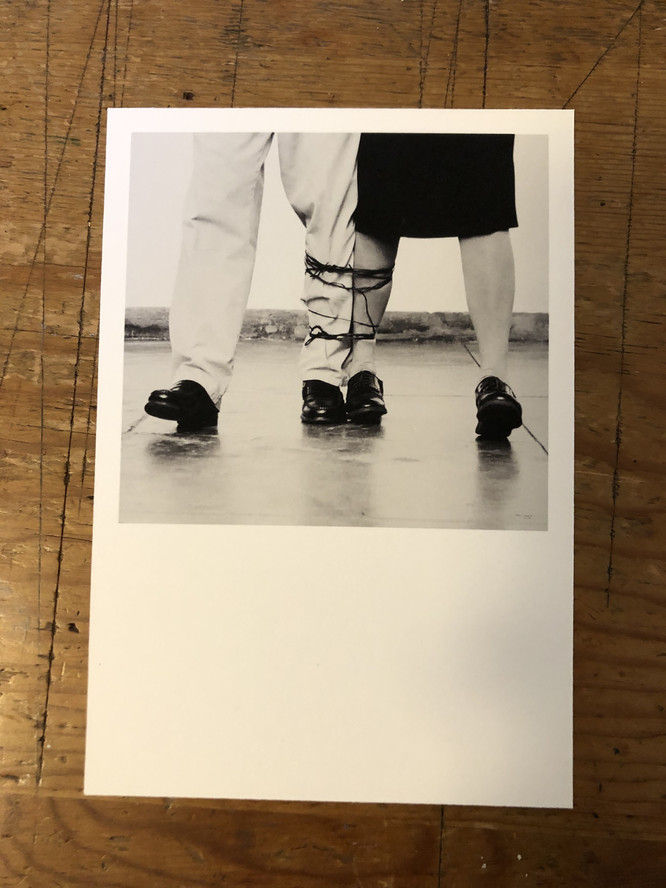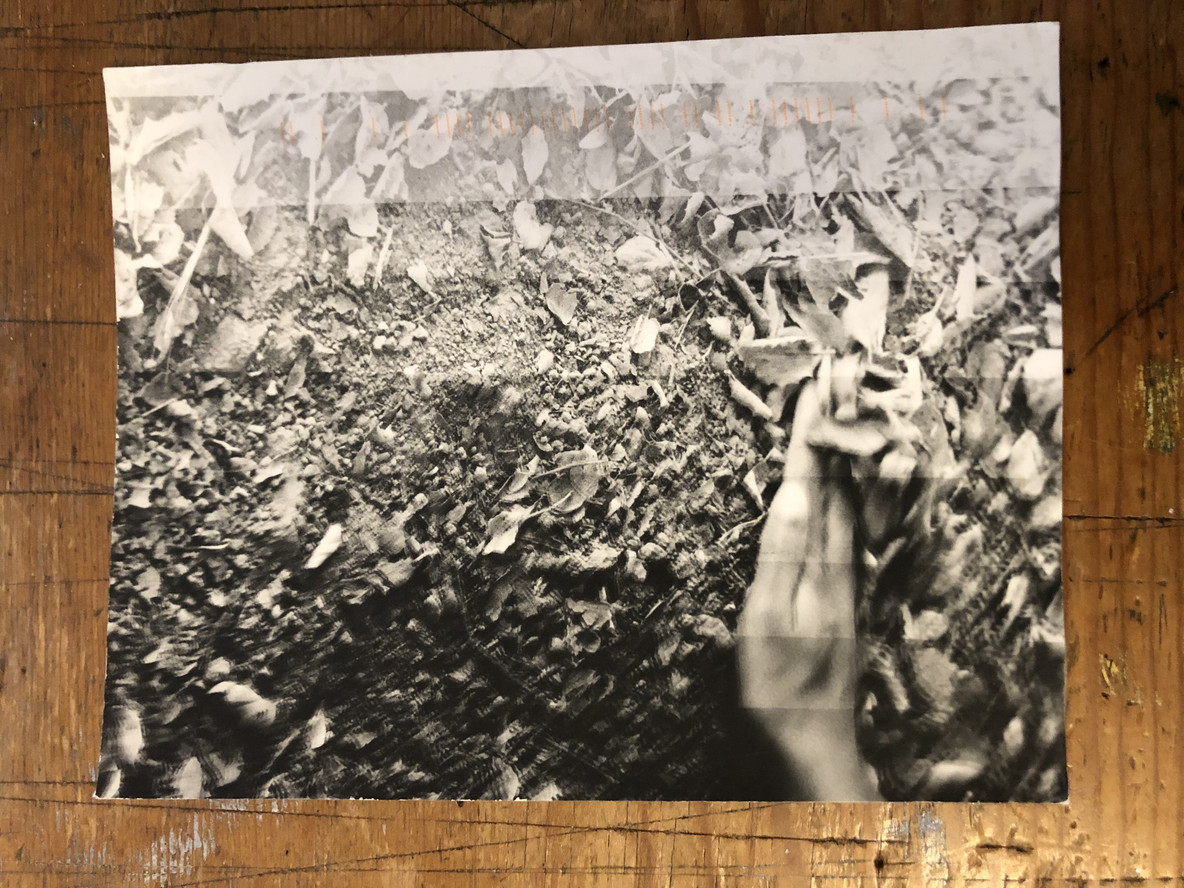
In Praise of Postcards
A curator reflects on the connections made by sending pictures through the mail.
Lucy Gallun
Feb 2, 2021
This past spring, my family spent several months at my parents-in-law’s house in the woods at the end of a road. Often, the only other person we saw during the course of the day was the mail carrier. At the sound of the truck coming down the hill, my children would run to the window and exclaim, “The mail truck!” During this period, the urge to communicate by mail became so great that my daughter learned to write. This feeling, which was amplified in August by news reports about the president’s deliberate crippling of the United States Postal Service, heightened my appreciation for the humble picture postcard. Sending a postcard allows us to share a souvenir from a place we visited, or to give the experience of a work of art (even if that work remains in the collection of a museum).

Postcard from Iñaki Bonillas
At the time, I also happened to be in the late stages of organizing Companion Pieces: New Photography 2020, an exhibition about correspondence between images. I professed my love of postcards to the eight artists included in the exhibition, and they obliged me by sending pictures from overseas and across the US. One of the first I received was sent by Iñaki Bonillas, from Mexico City, with an image by the late Portuguese artist Helena Almeida, who was known for her work in performance and photography. In the image, two legs are bound together below the knee, as if their owners are about to participate in a three-legged race. Conjoined crudely with black twine, two people have become a “we”—similar to two images coming together in one artwork, like so many in the exhibition.
After those first weeks of the pandemic, and during the Museum’s temporary closure, we had realized that the exhibition—the latest edition of MoMA’s New Photography series—would take shape in a different way than planned. Rather than being physically installed in the Museum’s galleries, Companion Pieces would take place on the Museum’s website, with features on each of the eight artists posted on MoMA’s Magazine. In late summer, as we prepared to launch the exhibition, I corresponded frequently with each of the artists. None were living in New York at the time; even if they had been, due to the pandemic we would’ve communicated by email and video call rather than in face-to-face meetings. We were also no longer preparing to gather to celebrate the opening at the Museum, nor was I going to have the opportunity to spend days surrounded by the artworks during installation. Though the ideas of the exhibition remained the same, I now had a sense of the component parts being dispersed across the globe, with the postcards conveying in physical form the correspondence we had been sharing.
Artists have long used the postcard as a means of artistic production. MoMA’s collection includes iconic examples of Conceptual artworks manifested as postcards, sent by artists through the mail as a record of the work itself. These include I Got Up by On Kawara and 100 Boots by Eleanor Antin; the latter was one of the first exhibitions in MoMA’s experimental Projects series, which began in 1971. Reflecting on 100 Boots in a 2014 interview in Bomb magazine, Antin described the differences between sending a work as a postcard and as a digital image disseminated on the Internet. “Snail mail was a very different experience from the Internet. A picture postcard came to your mailbox and it was an object you held in your hand…. The often ragged edges of the card suggests something of the places the card itself had been before it came to your place. On the Internet, you delete without touching. Germ free. Life free. Sure, you can print it out but that’s just an ugly piece of paper.”

Postcard from Dionne Lee
Some of the postcards the Companion Pieces artists sent exhibited the raggedness that Antin described, not because they had become worn en route, but because they were literally detritus from the studio. Dionne Lee’s image of the artist’s own hand clearing away leaves and pebbles from an area of ground is printed in a gradation from light to dark because it is a test strip: evidence of her own art-making process.

Postcard from Sohrab Hura
Other postcards appeared more like the vivid landscapes that provoke jealousy when your friend sends them from a holiday vacation. The lush photograph on a card sent by Sohrab Hura turned out to be Pati, a village in the Madhya Pradesh region of India that he has regularly photographed. Yet in his series of photographs The Song of Sparrows in a Hundred Days of Summer, which is featured in Companion Pieces, the same landscape appears dry and tan, not at all like the image here. Hura explains in a note on the postcard’s verso: “They are turning their desert into a forest and wanted to let others know.”

Postcard from Maria Antelman
Maria Antelman and Özlem Altın both sent images that combined different components into a single being, not unlike their works in the exhibition. The image on Antelman’s postcard is an amalgam of human and machine, like so many of her complex structural works. In this case the seat of a car has grown a nose, taking on the human form of its user.

Postcard from Özlem Altın
Altın sent a postcard that had been purchased from the Museo Archeologico in Florence, of a statue of a writhing Chimera, the monstrous creature from Greek mythology that is part lion, part goat, and part dragon. In Altın’s painted photomontages she draws from images in her expansive archive to imagine new beings that merge the extraordinary attributes of each original.

Postcard from Irina Rozovsky
An oversized postcard Irina Rozovsky sent from her home in Athens, Georgia, requires the recipient to hold it in their hands to experience it fully—somewhat like her “travel frames,” presented in the show—though I’ll attempt to provide a sense of its qualities here. The card appears at first to bear an image of a burgundy tulip floating in front of a silhouette of a tree. But Rozovsky’s written message includes a clue to raise the card in front of a bright light. Carrying out this instruction reveals a trio of birds flying up among yellow-leaved branches, shining through below the original image. Two pictures, one overlaid atop the other.

Postcard from Irina Rozovsky
At a certain point during the “run” of a typical exhibition, I’d have spent countless hours in the physical space. And walking through with visitors, I’d inevitably find myself drawing new connections between the works, links I hadn’t anticipated. Now, piling the postcards sent by the artists into a stack on my desk—and gathering them through this post—I might conjure a bit of that feeling I’ve missed, of bringing their works together into one place.

Postcard from Irina Rozovsky
Related articles
-

New Photography 2020
David Alekhuogie
In diptychs, triptychs, or in photographs stitched together like a quilt, the artist recognizes the photographed body as a layered symbol, much like his native Los Angeles.
Lucy Gallun
Nov 2, 2020
-

New Photography 2020
Zora J Murff
Weaving together portraits and landscapes, alongside found images, the artist’s series At No Point in Between presents a community that has been shaped by racist policies and a legacy of injustice.
Lucy Gallun
Oct 19, 2020

